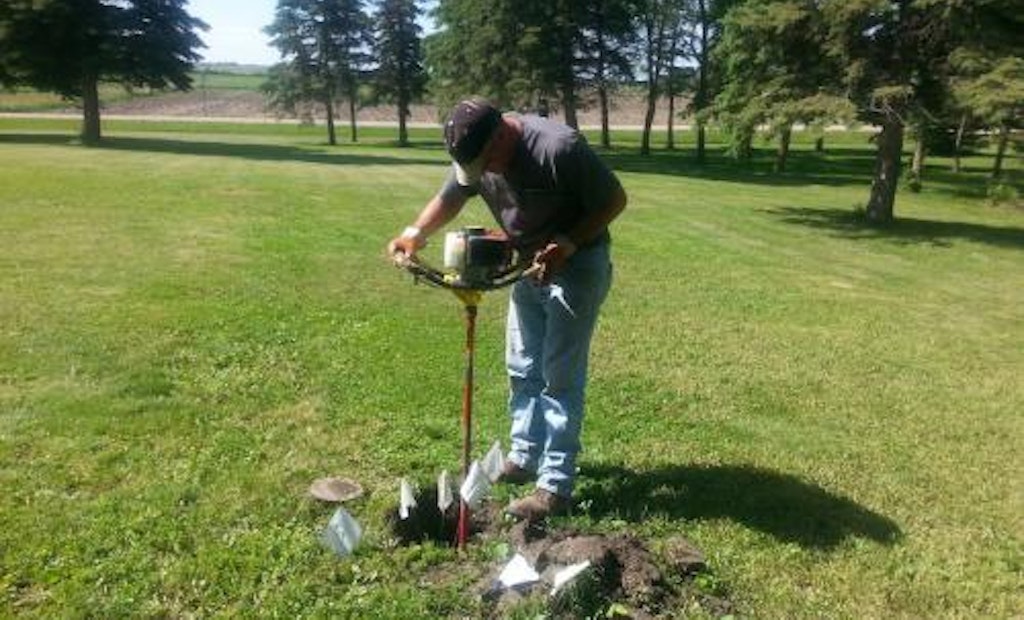Interested in Trucks?
Get Trucks articles, news and videos right in your inbox! Sign up now.
Trucks + Get AlertsThe Otter Tail Water Management District in Minnesota recently provided a unique study opportunity for the analysis of household practices and maintenance needs of septic systems. The district is comprised of approximately 440 (26 percent) permanent residences and 1,260 (74 percent) seasonal residences, and the study looked for correlations between household practices and the accumulation of sludge and scum.
Homeowner surveys (response rate 27 percent) were coupled with septic tank inspection and monitoring records kept by the OTWMD since 1981. The 1,500-gallon two-compartment septic tanks were cleaned when more than 25 percent of the liquid capacity was storing sludge and scum. The frequency at which septic tank pumping occurred and the average length of time between septic pumping events were evaluated for both seasonal and full-time residences.
.jpeg)
There were 28 household factors that were tested against the two cleaning categories. Of the 56 factors tested, 17 were found to have an impact on the need for septic tank cleaning based on sludge and scum accumulation.
Septic tank cleaning frequency and average time between tank cleanings were found to be significantly different based on property use (e.g. full vs. part time), meaning those who lived in a home full time had their septic tanks pumped more frequently. Since 1981, the average frequencies for septic tank cleanings between property use categories were 2.4 times for warm-month (May to September) part-time residents, 3.2 times for full-time residents and 2.7 times for all-season part-time residents. The average of average time between septic tank cleanings between property-use categories were: 8.9 years for warm-month part-time residents, 4.9 years for full-time residents, and 7.9 for all-season part-time residents.
Well water use was found to have an impact on average time between septic tank cleanings. This may be due to increased awareness of water usage if paying for city water, unlike well water where there is no city fee. Septic tank cleaning frequency and average time between septic tank cleanings was impacted by the presence of a dishwasher or washing machine. This is likely due to increased water usage associated with dishwashers and washing machines and the use of detergents. To ensure maximum water efficiency, washing machines and dishwashers should be set on proper load cycles and lint should be captured from the washing machine. Unlike other similar studies, the presence of a garbage disposal did not impact the frequency of septic tank cleaning. This may be due to the small size of the particles not settling out well in the septic tank or the seasonality of the majority of the properties. Septic tank cleaning frequency and average time between septic tank cleanings were impacted by the presence of a water softener, hot tub and fixture leaks, which all add extra water to the septic system. Water is relatively hard in the Otter Tail area, with most homes having a softener, so there is a potential for excess sodium loading in water softener discharge, which can also affect septic tank performance. There was no impact due to the use of septic system additives, which supports the principle that additives cannot be used in place of tank cleaning.
.jpeg)
The results of the study indicated an assessment every two to four years is still recommended to evaluate the need for pumping and to evaluate other system and use issues, which can affect long-term system performance.
A full copy of the report can be found at septic.umn.edu/research.
About the author
Sara Heger, Ph.D., is an engineer, researcher and instructor in the Onsite Sewage Treatment Program in the Water Resources Center at the University of Minnesota. She presents at many local and national training events regarding the design, installation and management of septic systems and related research. Heger is education chair of the Minnesota Onsite Wastewater Association (MOWA) and the National Onsite Wastewater Recycling Association (NOWRA), and serves on the NSF International Committee on Wastewater Treatment Systems. Send her questions about septic system maintenance and operation by email to kim.peterson@colepublishing.com.






